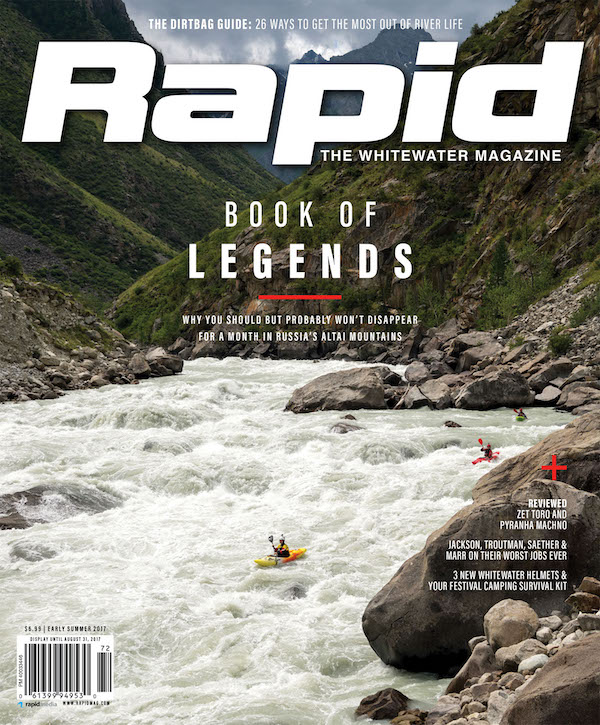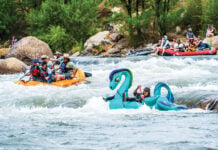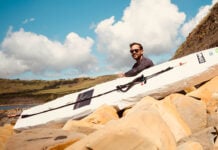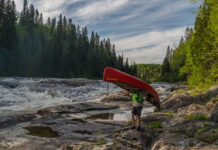Nevada native Sage Donnelly sounds like a normal teenage girl. She is bubbly, positive, laughs a lot and is stoked on getting her driver’s license. But Donnelly is a little different: she’s also a whitewater kayaking phenomenon. She began kayaking at three in a Eskimo ToPo Duo, at five had her own kayak, rolled at seven and at fifteen won the 2015 Junior Women’s Freestyle World Championship—and nabbed a finals score higher than any senior woman in the event. The 16-year-old homeschooler also races slalom and downriver—and does it all while managing Type 1 Diabetes.
WHAT’S YOUR LIFE LIKE?
In the U.S. or Canada I am in a massive orange van. We have two beds in there so we can bring the dogs and the whole family. We’re in that around five months out of the year. But now that I’m doing a lot of slalom and travelling overseas quite a bit, we’re doing a lot of Airbnb. For training my usual routine is to wake up pretty early in the morning, eat breakfast quickly, go out and usually do a whitewater or flatwater workout. I’ll come back, do school, eat lunch and then go back out again paddling two or three times.

WHAT’S THE SCARIEST THING THAT HAS HAPPENED TO YOU KAYAKING?
I was on the Tellico River in Tennessee. We had a massive crew with a lot of kids and most of us hadn’t done the river before. We got to the last drop and one guy was in a playboat and he didn’t boof it very well and got pinned upside down. One of the guys put his boat below his head so at least he could pull himself up and breathe. I was paddling up and didn’t realize anything was wrong because no one had whistled or signaled. When I got to the drop I could tell something was wrong, so I turned back upstream to catch an eddy, but it wasn’t a very good eddy. I fell in backwards and got pinned vertically upstream. I was under for about a minute and then my dad pretty much ran on water and pulled me out. I was mainly upset my boat was dented.
DO YOU EVER GET ANXIOUS OR STRESSED OUT WITH KAYAKING?
There’s always that little thing in the back of my mind thinking about if I’m off on a move or touching gates. The biggest thing I worry about is that I’m not improving fast enough. I actually go back to look at old videos quite a bit to realize how much I have improved. I just always try to be positive in my sessions.
DOES BEING A TYPE 1 DIABETIC MEAN YOU APPROACH KAYAKING A BIT DIFFERENTLY?
It definitely makes things a lot different. I have to plan things out a lot more. I can’t just go paddle whenever I want. I have to go, ‘My blood sugar is this, I have to bring this kind of food, I need to make sure I can always have snacks. It’s a lot of planning which can be a major pain, but I think it’s made me a lot more in tune with my body which has helped me a lot with kayaking.
WHAT WAS THE BEST PART OF 2016?
2016 was a pretty rough year for me. My Junior Slalom Worlds results were nowhere near as good as I wanted them to be and I took that hit pretty hard. But after that I had three Junior races in Europe and probably the best thing was how I bounced back from that and came back much more mentally strong and positive. I did a lot better in those races instead of just giving up and going home.

Subscribe to Paddling Magazine and get 25 years of digital magazine archives including our legacy titles: Rapid, Adventure Kayak and Canoeroots.







